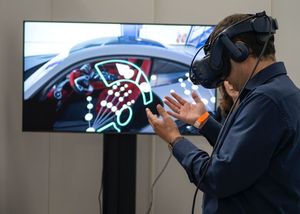

|
Edward Lowton
Editor |


|
| Home> | Plant, Process & Control | >Industry 4.0 | >Could remote working become the new normal? |
Could remote working become the new normal?
20 November 2020
IN 2020 managers around the world had to quickly transition to working from home to maintain productivity during global disruption. Some businesses tried remote working for the first time and others extended their existing flexible working policies. So, what can we learn from this disruption and how can we apply it to our future working environment to make people as efficient as possible? Alex Darby explores how businesses can embrace a new era of working

Remote working in the long term, however, takes more than choosing a good video conferencing platform. Businesses must consider how their team can effectively and securely access content from multiple environments. Every business will have a different set up, for example employees might use corporate laptops or personal devices. Employers should consider the best environment for their team. For example, should they host a server that employees access using a VPN, store data using a cloud-based environment and access content on shared platforms such as Google Drive or Microsoft Teams?
Will offices become obsolete?
As more businesses embrace remote working and less people are in the office at any one time, employers may reduce available workstations and office space. However, businesses should not remove private workspaces all together. Remote working can improve productivity, but employers should also be aware of the importance of a group workspace.
Embracing company culture and developing relationships can be difficult to do digitally. Businesses should consider how they can adapt the workspace to maintain these important relationships and encourage communication, collaboration and engagement. Larger meeting spaces, for example, can provide space for company meetings, training sessions and events where the whole team can gather.
Could it work for the factory?
Some tasks, particularly in manufacturing, require workers to complete physical tasks using machinery that cannot leave the facility. The need for human workers also means that the industry is less prepared than others to embrace flexible working.
Workplace performance specialist Leesman published a survey of more than 700,000 employees worldwide about their experience working from home. Of the 52,240 surveyed from the manufacturing and engineering sectors, 53 per cent had no experience in working from home. In comparison, 52 per cent of people in other businesses had regularly worked from home or at least had some remote working experience. So, can the manufacturing industry embrace this new way of working?
Flexible technology
While a factory worker cannot complete all their tasks over a video conference service, facilities managers can invest in technology to increase flexibility. Virtual reality (VR), for example, allows teams across different areas of the business, or even different geographies, to collaborate. Manufacturers could use VR to host meetings, train new employees using a virtual machine and tools or allow multiple teams to collaborate on a project from different locations.
Wearable devices can also improve collaboration between factory workers and management staff who could work from home. For example, employers can access data from devices worn by factory staff to visualise operations from their homes and ensure that staff are productive and safe. Factory employees can also use wearables and augmented reality (AR) to immediately access real time data or information that can help them complete tasks, such as machine maintenance, accurately and quickly.
The future workplace won’t be the same for everyone — some roles still require people in factories or other facilities. However, we believe that all businesses can learn from the few months that the entire world was operating from home. Improving flexibility could be the answer to improving productivity.
Alex Darby is head of people at EU Automation
- Ensuring deployed equipment works in harmony
- The robots are coming
- Remote working in engineering
- The crystal ball: predictive vs preventive maintenance
- Is the future of AI open source?
- Digital industry around the world
- How to improve efficiency in small batch manufacturing
- The future looks green
- Harsh environment maintenance challenges
- How to improve efficiency in small batch manufacturing
- Introducing Industry 4.0 to SMEs
- Enhance maintenance practices
- Digital transformation: Customer insight matters
- IoT digital experiments as a service
- Smarter maintenance: Paper available
- Condition monitoring & Industry 4.0
- Smart data collection
- Mechanised welding, cutting and Industry 4.0
- Tomorrow’s tech is here today
- The business value of Industry 4.0


















